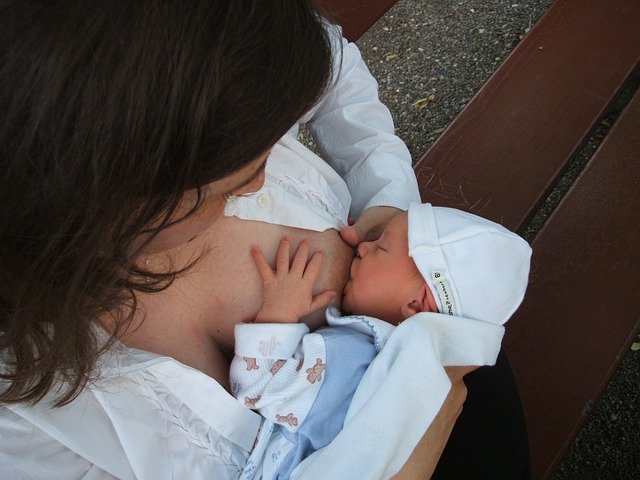Breastfeeding, (also called nursing in American English), comes with a plethora of benefits for the baby, the mother, the environment and the community. (Office on Women’s Health, n.d.).
Human milk VS the human milk substitutes
Human milk is designed especially for human babies. Despite the variety of substitutes, human milk has many advantages over substitutes (LLU Children’s hospital, n.d) The ingredients in breastmilk can not be manufactured (Breastfeeding partners, n.d) and animal milks are very different in quality and quantity that can never be equivalent or have the same anti-infective properties of human milk (WHO, 2009). For example, the proteins in human milk are more easily digested and the absorption of iron and calcium is higher (American Pregnancy association, n.d) In addition, formula milk does not give any health benefits to mothers. (NHS, n.d).
Human milk is the perfect food for the newborn
According to the World Health Organization, colostrum, the milk produced at the end of the pregnancy, is the perfect food for newborn; feeding should be initiated within the first hour after birth, and should not be decreased even when starting solid food.
Regardless of the overflow of reputable sources, Clinicians might not be aware enough of the long-term health benefits for mothers and babies in developed countries. (Hoddinott et al, 2008). Breastfeeding should be promoted, supported and protected by health care workers. Ideally, they should be trained in breastfeeding issues and counseling (Agostoni et al, 2009).
The breastfeeding benefits for the baby
Breast milk has the right balance of nutrients (LLU Children’s hospital, n.d), and nearly the perfect mix of vitamins, protein and fat. (WebMD, n.d) It contains bioactive molecules that protect against infection and inflammation and contribute to immune system, organ development, and healthy microbial colonization (Ballard, Morrow, 2013) Breast milk is associated with lower risks of Childhood leukemia , Childhood obesity , Ear infections , Eczema (atopic dermatitis) , Diarrhea and vomiting , Lower respiratory infections , Asthma, Necrotizing enterocolitis, Sudden infant death syndrome (SIDS), Type 2 diabetes (Office on Women’s Health, n.d) Breast milk changes according to the baby’s needs, it is good for baby’s mouth and face muscles. (Health.NY.GOV, n.d).It is always the right temperature (New York State Department of Health, n.d) and it is linked to brain development (Minnesota department of health) and higher IQ (WebMD, n.d)
The breastfeeding benefits for the mother
Breastfeeding lowers the risk of breast cancer, ovarian cancer, osteoporosis (weak bones), cardiovascular disease, obesity (NHS Choices) type 2 diabetes, and may contribute to weight loss. It saves money (on formulas, feeding supplies such as bottles and sterilize nipples etc), and many health costs since breastfeed babies may sick less often (Office on Women’s Health, n.d). It saves plenty of time (Minnesota department of health) because babies can be fed right away. It helps the uterus restore it’s normal size and delays the return of periods (AAFP, nd)
The breastfeeding benefits for the Society and the environment:
Breastfeeding offers lifesaving protection against infectious illnesses in disadvantaged populations (Heinig, 2001). According to Womenshealth.org, a recent research shows that if 90% of families breastfed exclusively for 6 months, nearly 1,000 deaths among infants could be prevented. Breastfeeding results in less medical visits, prescriptions and hospitalizations, Cans, bottles and equipment creates waste and trash. Mothers can be more productive if they spend less time for taking care sick infants. Warming of milk requires energy consumption; in contrast, breast milk is always at the right temperature (New York State Department of Health, n.d)
Resat Alagiali
References and bibliography
Agostoni, C., Braegger, C., Decsi, T., Kolacek, S., Koletzko, B., Michaelsen, K. F., Mihatsch, W., Moreno, L. A., Puntis, J., Shamir, R., Szajewska, H., Turck, D. and van Goudoever, J. (2009) ‘Breast-feeding: A Commentary by the ESPGHAN Committee on Nutrition’, Journal of Pediatric Gastroenterology and Nutrition, 49(1), pp. 112–125. doi: 10.1097/MPG.0b013e31819f1e05.
Breastfeeding Education & Tips | Children’s Hospital (no date). Available at: http://childrens-hospital.lomalindahealth.org/our-services/total-care-birth-center/breastfeeding (Accessed: 8 March 2017).
Breastfeeding (no date). Available at: http://www.health.state.mn.us/divs/oshii/bf/about.html (Accessed: 15 March 2017).
Breastfeeding Your Baby: Breastfeeding – Simply the Best (no date) New York State Department of Health. Available at: https://www.health.ny.gov/publications/2961/ (Accessed: 15 March 2017).
Breastfeeding Benefits for Mom and Baby (no date). Available at: http://www.webmd.com/parenting/baby/nursing-basics#1-2 (Accessed: 8 March 2017).
Ballard, O. and Morrow, A. L. (2013) ‘Human milk composition: nutrients and bioactive factors.’, Pediatric clinics of North America. NIH Public Access, 60(1), pp. 49–74. doi: 10.1016/j.pcl.2012.10.002.
Choices, N. (no date) ‘Benefits of breastfeeding – Pregnancy and baby guide – NHS Choices’. Department of Health. Available at: http://www.nhs.uk/Conditions/pregnancy-and-baby/Pages/benefits-breastfeeding.aspx (Accessed: 8 March 2017).
familydoctor.org editorial staff (no date) Breastfeeding: Hints to Help You Get Off to a Good Start – familydoctor.org. Available at: https://familydoctor.org/breastfeeding-hints-to-help-you-get-off-to-a-good-start/?adfree=true (Accessed: 8 March 2017).
For My Baby, For Me (no date). Available at: http://breastfeedingpartners.org/index.php?option=com_content&view=article&id=13&Itemid=129 (Accessed: 8 March 2017).
Hoddinott, P., Tappin, D. and Wright, C. (2008) ‘Breast feeding’, Bmj, 336(April), pp. 881–887. doi: 10.1136/bmj.39521.566296.BE.
Heinig, M. J. (2001) ‘Host Defense Benefits of Breastfeeding for the Infant’, Pediatric Clinics of North America, 48(1), pp. 105–123. doi: 10.1016/S0031-3955(05)70288-1.
What’s in Breast Milk? – Nutrients and Vitamins in Breast Milk (no date). Available at: http://americanpregnancy.org/first-year-of-life/whats-in-breastmilk/ (Accessed: 8 March 2017).
World Health Organization (2009) Infant nutrition, Infant and Young Child Feeding: Model Chapter for Textbooks for Medical Students and Allied Health Professionals. doi: 10.1111/j.1740-8709.2009.00234.x.
image
https://pixabay.com/en/breastfeeding-newborn-baby-mother-2090396/

Leave a Reply